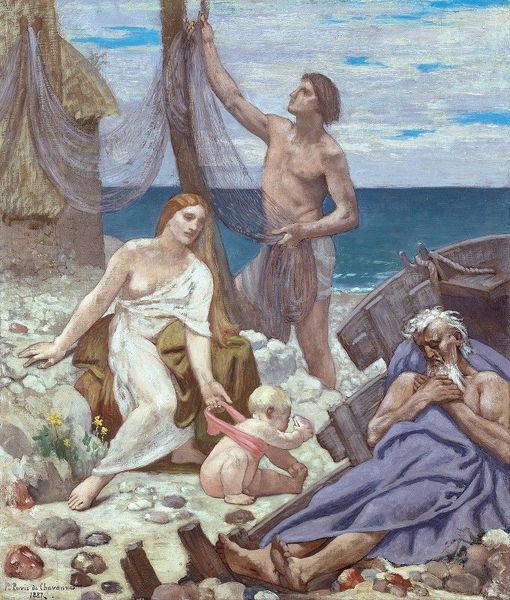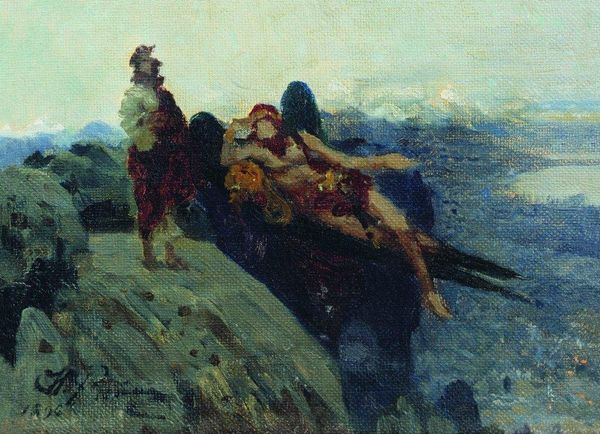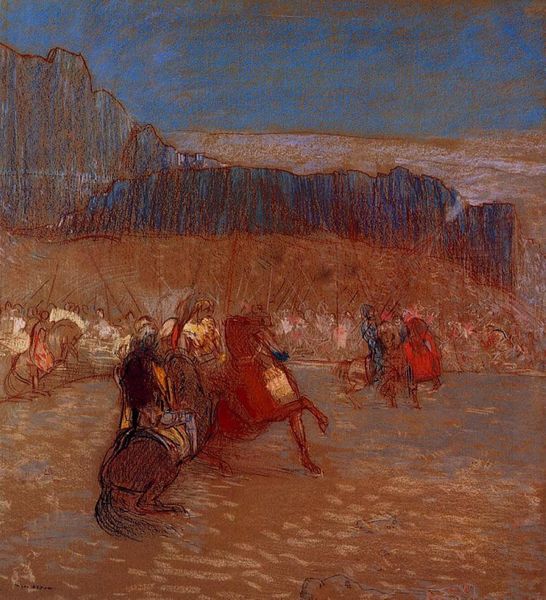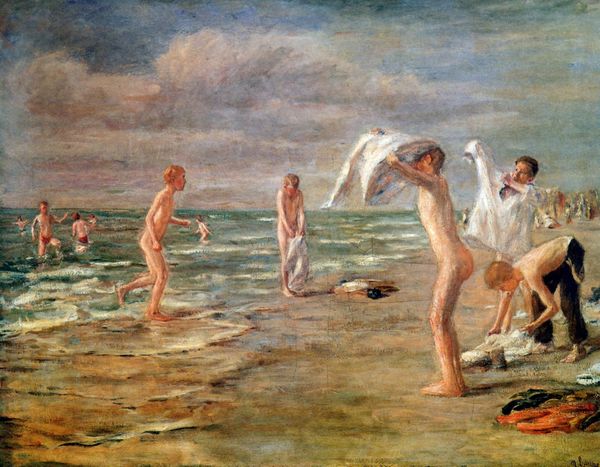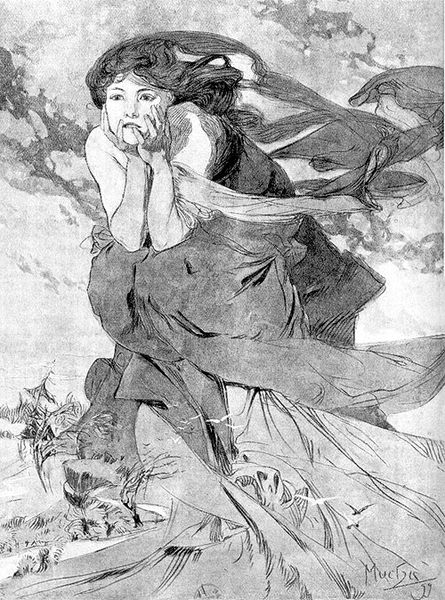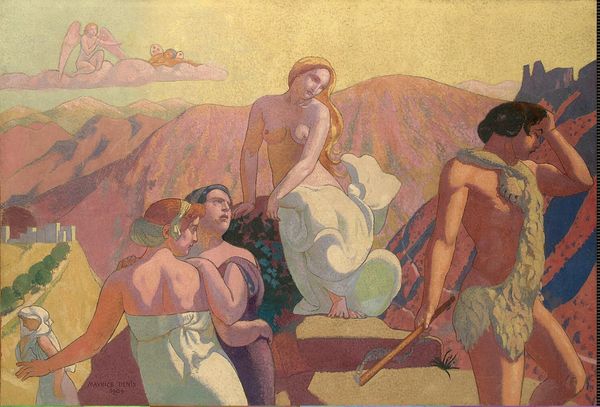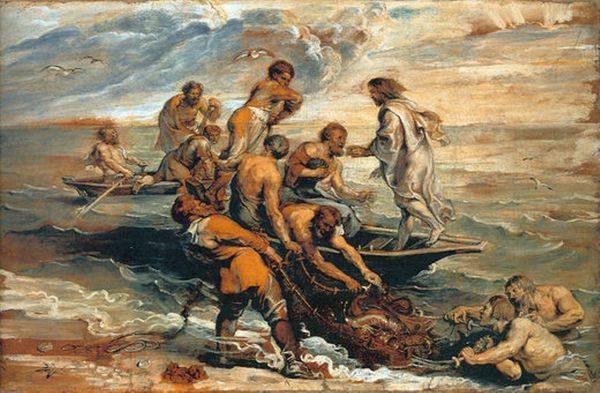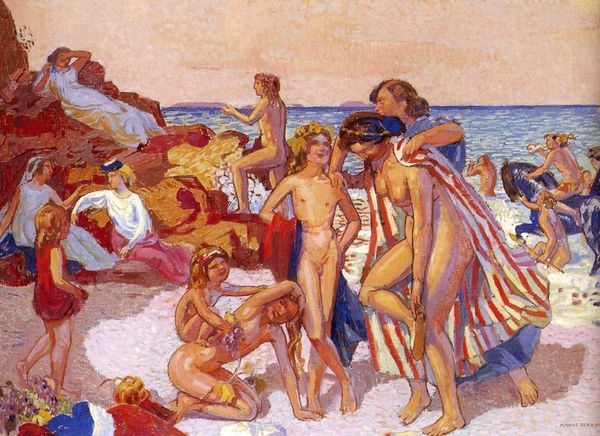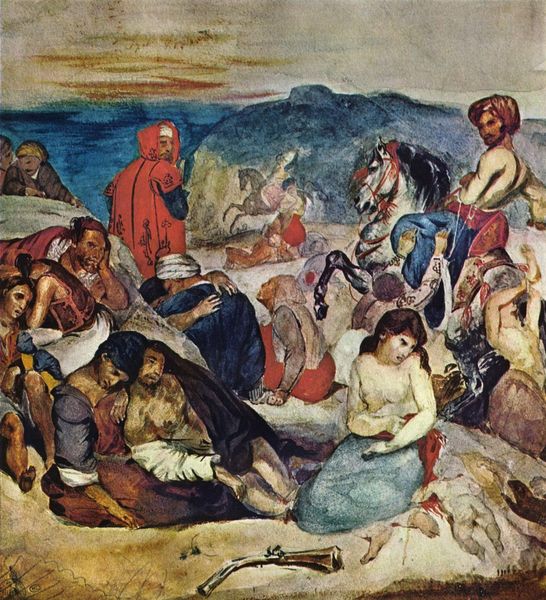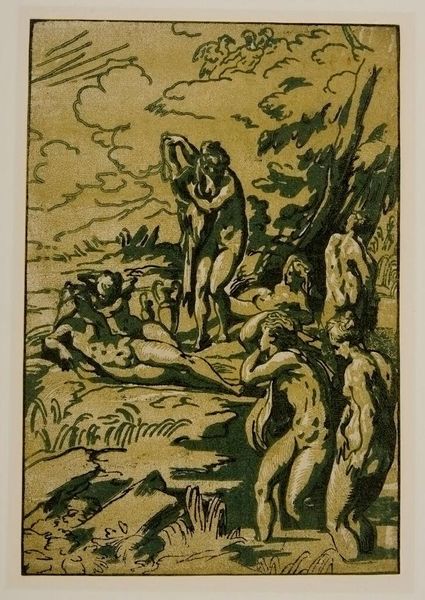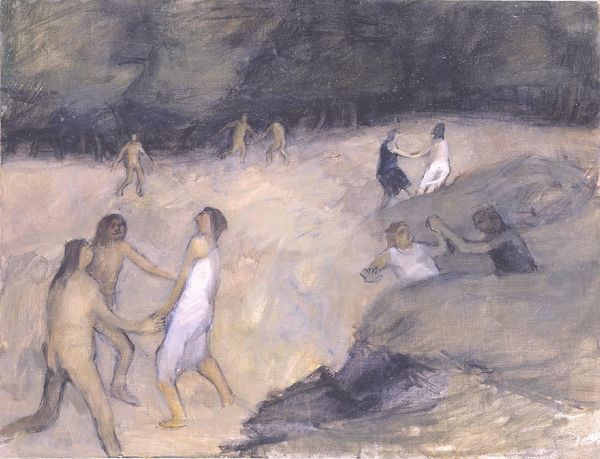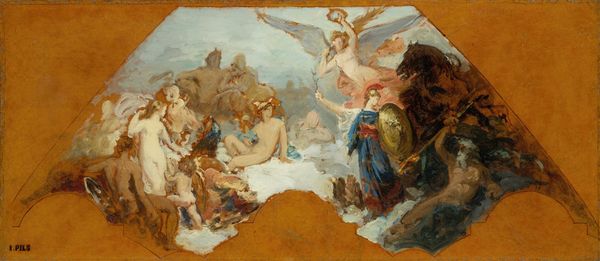
Dimensions: 51 x 100 cm
Copyright: Public domain
Editor: Here we have Max Klinger’s "Meeresgötter in Der Brandung," painted in 1885. The texture of the water really strikes me, almost rough and very tangible. How do you see the piece? Curator: Well, looking at this through a materialist lens, I’m immediately drawn to how the work implicates both the artist and the viewer in cycles of production and consumption. Klinger's application of oil paint, almost aggressively textured, makes the viewer acutely aware of the labor involved. Consider how this portrayal of mythological figures intersects with late 19th-century social norms and burgeoning industrialism. Does this idyllic scene reinforce or challenge societal perceptions about labor and leisure? Editor: I hadn’t thought about it that way, but I see your point. The visible brushstrokes really do emphasize the making of the artwork. Curator: Exactly. And consider the setting - the ocean. What raw materials are at play? The salt, the potential for trade, of industrial fishing, but even then Klinger shifts our focus onto this…mythological playground of supposed leisure. How is he valorizing materials? Editor: I guess it's suggesting the artist saw materials differently compared to an increasingly consumer-driven audience. Curator: Precisely. And perhaps that difference, is the political stance on craft. Editor: I see now that this painting does more than just depict a scene, it comments on the act of creation and how that relates to societal values of craft versus production in society. Curator: Right, we see a tension that emerges between the representation of mythical leisure and the evident manual labor in the art-making process itself, and by looking into what are we consuming and creating in our art, is art creating cultural conversations and moving society to value and consider craftsmanship. Editor: That's a really interesting perspective; it shifts how I see not only this artwork, but the role of the artist entirely.
Comments
No comments
Be the first to comment and join the conversation on the ultimate creative platform.


